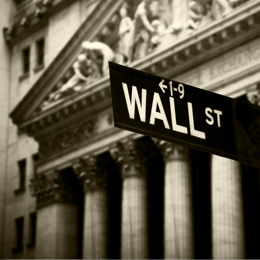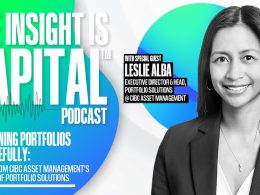What Does the AT&T/Time Warner Merger Mean for the Market?
by Brad McMillan, CIO, Commonwealth Financial Network
There have been a lot of headlines in the past couple of days about the proposed mega-merger between AT&T and Time Warner. In fact, I was on CNBC yesterday discussing it. At $85 billion, this would be the sixth-largest merger of all time, so it is indeed a big deal. Does it have any larger meaning, though?
Merger could signal a market top
One of the worries is that the merger could be a sign that the market has reached its top. Large mergers do tend to occur around peaks in the stock market, for a variety of reasons. For example:
- Mergers make the most sense when companies’ ability to grow organically has peaked. Unable to expand the business, companies try to grow by acquisition instead.
- Mergers offer opportunities for financial engineering that can boost the bottom line as well as the top line. Given the costs and risks of a merger or acquisition, they make less sense when the business is growing, but they can be attractive when that growth slows.
History confirms that the largest mergers often come when the market is peaking. Of the 15 largest mergers in history (not including this one), 9 of them, or 60 percent, took place in the period between 1998 and 2001. Three took place between 2003 and 2006. Only three occurred in non-bubble environments. Clearly, there is a suggestion that high stock prices at market tops drive mega-mergers.
At the same time, though, one such merger doesn’t necessarily signal the end of the market’s run. On average, there was a lag of about 15 months between each of the 10 largest mergers and a significant market downturn. Initial mega-mergers tended to kick off the trend, followed by a cluster of other mergers in the next couple of years. The Travelers/Citicorp merger in 1998 was followed by several deals in 1999 and 2000. Of the three mergers between 2003 and 2006, the first one signaled a higher market risk level, but that risk did not become immediate until a couple of years later, when other deals confirmed the trend.
Potential for further strong performance
So what does this mean for investors? In the short term, though the start of a mega-merger trend does raise red flags, it also raises the possibility of strong market performance. After all, when the most recent two trends started, in 1998 and 2003, a couple of great years were still ahead. High risk doesn’t necessarily mean low returns, especially over the following one- to two-year period.
Fundamentally, there are also reasons to believe the next year or two might be good for the markets. The earnings recession may well end this quarter; if not, it will probably end early next year, which should be good for markets. Consumer confidence and business confidence are recovering and could continue to move higher. Wage growth continues to improve, which should support consumer spending and confidence.
In other words, both the economic and market fundamentals are improving at the same time that, historically, we have seen markets take off in the past two cycles.
What’s interesting is the potential timing of the end of the market cycle, as suggested by the start of the merger trend. Given the average 15-month lag, running between about 6 months and 36 months, we can reasonably expect a cluster of such deals sometime in the next year or so and a market downturn not long thereafter. This timing is also consistent with the potential bear market time frame, based on the four risk factors we’ve discussed: recession, oil prices, the Fed, and valuations.
This suggests that the stock market cycle is proceeding along the same lines we have seen before. In other words, so far, so normal.
Overall, if historical patterns hold, this merger may well be good for the market in the short term, even as it ratifies increasing risks over the medium term. As always, I will be keeping an eye on things, with my monthly update on market risks, but at the moment, I’m not concerned about the effects of this merger. The potential benefits appear to outweigh the risks.
*****
Brad McMillan is the chief investment officer at Commonwealth Financial Network, the nation's largest privately held independent broker/dealer-RIA. He is the primary spokesperson for Commonwealth's investment divisions. This post originally appeared on The Independent Market Observer, a daily blog authored by Brad McMillan.
Forward-looking statements are based on our reasonable expectations and are not guaranteed. Diversification does not assure a profit or protect against loss in declining markets. There is no guarantee that any objective or goal will be achieved. All indices are unmanaged and investors cannot actually invest directly into an index. Unlike investments, indices do not incur management fees, charges, or expenses. Past performance is not indicative of future results.
Commonwealth Financial Network is the nation's largest privately held independent broker/dealer-RIA. This post originally appeared on Commonwealth Independent Advisor, the firm's corporate blog.
Copyright © Commonwealth Financial Network












